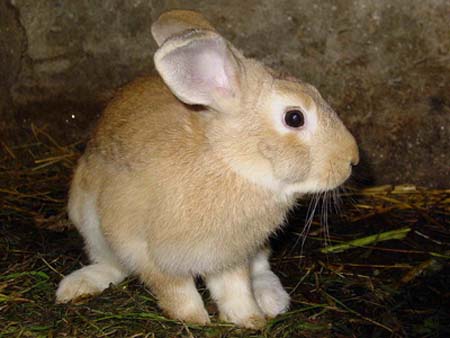|
|
| (5 intermediate revisions by 2 users not shown) |
| Line 1: |
Line 1: |
| − | {{unfinished}} | + | {{frontpage |
| | + | |pagetitle =Enteropathies - Rabbit |
| | + | |pagebody = Bacterial enteropathies should really be regarded as "overgrowths". |
| | + | |contenttitle =Content |
| | + | |contentbody =<big><b> |
| | + | <categorytree mode=pages>Enteropathies - Rabbit</categorytree> |
| | | | |
| − | Bacterial enteropathies should really be regarded as "overgrowths".
| + | </b></big> |
| | + | |logo =800px-Coello GDFL000.jpg |
| | + | }} |
| | | | |
| − | ==[[Clostridial Diseases - Rabbit]]==
| |
| | | | |
| − | ==[[Colibacillosis - Rabbit]]==
| + | {{Learning |
| | + | |Vetstream = [https://staging.vetstream.com/lapis/Content/Freeform/fre00015 Enteritis enteropathy in rabbits] |
| | + | }} |
| | | | |
| − | ==[[Tyzzer's Disease - Rabbit]]==
| |
| | | | |
| − | | + | [[Category:Rabbit Digestion]] |
| − | | |
| − | ==Salmonellosis==
| |
| − | {{unfinished}}
| |
| − | Salmonellosis is due to ''Salmonella typhimurium'' which has been recorded as manifesting a severe enteritis in baby rabbits. Clinical signs include depression, fever, +/- diarrhoea, abortion (Okerman 1994). Salmonellosis is a zoonosis.
| |
| − | | |
| − | ==Pseudotuberculosis==
| |
| − | {{unfinished}}
| |
| − | (syn: rodentiosis)
| |
| − | Pseudotuberculosis is not just a condition of the gastrointestinal tract. Infection with ''Yersinia pseudotuberculosis'' as a result of direct or indirect contact with infected rodents or wild birds is encountered occasionally. The provision of freshly gathered wild plants or unwashed vegetables must be considered as a source of infection. Clinical signs include cachexia with an enlarged spleen being detected on abdominal palpation. Diagnosis is usually made on post-mortem examination, the organism being isolated from the typical lesions - necrotic foci in the lymphoid tissue of the spleen, caecum and ileo-caecal. Treatment and prevention of spread of the infection to contact animals is by the use of oral fluoroquinolones. Further prevention is via rodent control.
| |
| − | | |
| − | ==Synopsis of treatment for enterotoxaemia and bacterial enteritis==
| |
| − | {{unfinished}}
| |
| − | *Warmth up to 27°C
| |
| − | *Fluid therapy
| |
| − | **Hartmann’s is probably better than dextrose-containing fluids (Clostridial toxins “feed” on monosaccharides)
| |
| − | **intravenous or intraosseous.
| |
| − | **maintenance = 100ml/kg/day
| |
| − | *Analgesia
| |
| − | **buprenorphine
| |
| − | **butorphanol
| |
| − | **carprofen
| |
| − | *Cholestyramine resin (Questran, Bristol-Myers Pharmaceuticals) - rabbit must be well-hydrated because the same chain of events occur when ispaghula husk (psyllium) is given to rabbits (see anatomy and physiology of the digestive tract).
| |
| − | *Antibiotics are indicated if it is a true bacterial enteritis but should be avoided if ''Salmonbella'' sp. is isolated.
| |
| − | *Probiotics. ''Lactobacillus'' spp are claimed to attach to mucosa and compete with pathogenic bacteria.
| |
| − | *Transfaunation
| |
| − | **Caecotrophs collected from a healthy rabbit
| |
| − | **Elizabethan collars
| |
| − | **Fed whole to maintain the protective mucus coating
| |
| − | *Rabbits with diarrhoea should never be starved
| |
| − | **Ad lib hay and leafy greens. Dandelions, parsley, freshly pulled (not cut) grass and groundsel
| |
| − | **Assisted feeding – commercial high fibre products for herbivores are available (eg). Most rabbits will accept food orally may be necessary.
| |
| − | **Vitamin C may be of use in limiting the absorption of iota toxins and improving mucosal integrity
| |
| − | **Oxbow Critical care for herbivores,
| |
| − | **Supreme Recovery Diet via a syringe or nasogastric intubation
| |
| − | | |
| − | | |
| − | ==References==
| |
| − | *Bell, J. C., Palmer, S. R. and Payne, J. M. (1988). '''The Zoonoses'''. Edward Arnold, London. ISBN 0-7131-4561-7
| |
| − | *Carman, R. J. (1994) Clostridial enteropathies of rabbits. Journal of Small Exotic Animal Medicine. 2 (4), 179-181
| |
| − | *Okerman, L. (1994) '''Diseases of Domestic Rabbits'''. Blackwell Scientific Publications ISBN 0-632-03804 -7. 2nd Edition
| |
| − | *Walden, N. B. (1990) '''Rabbits - A Compendium'''. The T.G. Hungerford Vade Mecum Series for Domestic Animals. Series C Number 13 Published by the University of Sydney Post Graduate Foundation In Veterinary Science March 1990 ISBN 0909973 80 6 ISN 0812 0048
| |
| − | | |
| − | | |
| − | [[Category:Digestive_Disorders_-_Rabbit]] | |
